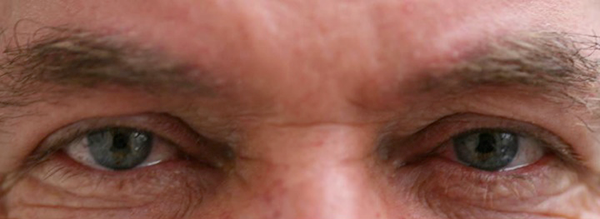
Person wearing KAMRA Vision implants.
Presbyopia, the inability to see things up close, affects large portions of the population as we grow older. Most people with the condition end up using reading glasses, putting them on and off as necessary, while some people keep them on throughout the day and end up looking like that English teacher from your childhood that would read famous poems in front of the class. Soon there may be a new options for Americans that would rather avoid glasses all together.
 The KAMRA Vision corneal inlay device has a camera-like aperture that automatically adjusts to change the depth of field of the image that falls on the retina. This allows implantees, after a 10 minute procedure using topical anesthesia, to go about their day without resorting to glasses and hopefully allowing them to regain their healthy vision. The device has been going through clinical trials, with some details on the latest below.
The KAMRA Vision corneal inlay device has a camera-like aperture that automatically adjusts to change the depth of field of the image that falls on the retina. This allows implantees, after a 10 minute procedure using topical anesthesia, to go about their day without resorting to glasses and hopefully allowing them to regain their healthy vision. The device has been going through clinical trials, with some details on the latest below.
From the American Academy of Ophthalmology:
To test the inlay’s efficacy, clinicians conducted a prospective non-randomized study of 507 patients between 45 and 60 years of age across the United States, Europe and Asia with presbyopia who were not nearsighted. The researchers implanted the ring in the patients and followed up with them over the course of three years. In 83 percent of eyes with the implant, the KAMRA corneal inlay allowed presbyopic patients to see with 20/40 vision or better over the three years. This is considered the standard for being able to read a newspaper or drive a vehicle without corrective lenses. On average, patients gained 2.9 lines on a reading chart. The researchers report that the results remained steady over a three-year period.
Complications from corneal inlays in general have included haziness that is treatable with steroids; however, improvements in inlay design have made the effect less common. If necessary, inlays can be removed, making it a reversible treatment, unlike other procedures such as LASIK for presbyopia.
Product page: KAMRA Vision…
American Academy of Ophthalmology: Could Reading Glasses Soon Be a Thing of the Past?
